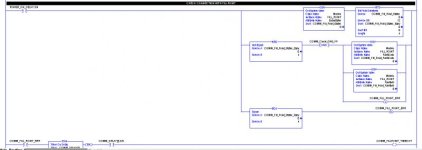pjgajeski21
Member
I was wondering how everyone is handling Ethernet Communication faults. I am trying to figure out what best practice is.
We running compact logix L36erm with some 1769-Aentr drops. Everything is connected with Stratix 5700 switch.
When the system powers up in the field the we sometimes get
Error (Type 03) I/O Fault (Code 16) I/O module connection failed on required
We want to have the I/O fault if there is loss comm while running.
I don't want to do it on the startup.
We have been told, this is caused by the Stratix 5700 switch. The switch does not boot-up fast enough. Has any seen this before?
I can reset the fault with GSV \SSV commands. I really don't like resetting major faults automatically. Not sure that this is best practice.
What is the best way to handle this error? Ant tips would be appreciated.
We running compact logix L36erm with some 1769-Aentr drops. Everything is connected with Stratix 5700 switch.
When the system powers up in the field the we sometimes get
Error (Type 03) I/O Fault (Code 16) I/O module connection failed on required
We want to have the I/O fault if there is loss comm while running.
I don't want to do it on the startup.
We have been told, this is caused by the Stratix 5700 switch. The switch does not boot-up fast enough. Has any seen this before?
I can reset the fault with GSV \SSV commands. I really don't like resetting major faults automatically. Not sure that this is best practice.
What is the best way to handle this error? Ant tips would be appreciated.





